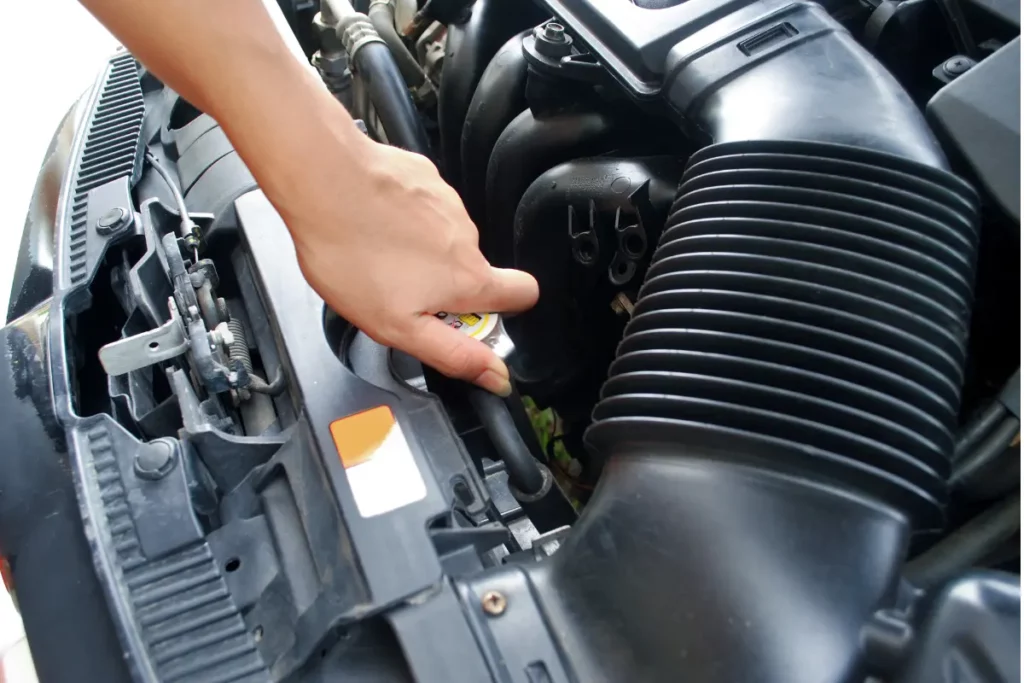Your car’s cooling system is your engine’s tireless guardian. It shields your engine from overheating by regulating its temperature—ultimately ensuring optimal functionality. This is why recognizing the warning signs of a failing cooling system and addressing these issues early can save both time and money in the long run, preventing severe damage to your vehicle’s engine.
When your cooling system starts to falter from wear and tear, your vehicle exhibits various telltale signs that should never be ignored. These indications range from excessive engine temperature, coolant leakages, or even strange noises emanating from the engine compartment.
In this guide, we will explore some simple yet effective strategies to keep your car’s cooling system in top condition, focusing on early detection, common warning signs, and the impact on the overall health of your vehicle.
Radiator Leaks: Detection & Remedy
Leaking coolant under the car or visible puddles beneath the engine could indicate a compromised radiator. If you notice bright-colored fluid (usually green, yellow, or pink) beneath your parked car, or notice a sweet, syrupy smell inside or outside the vehicle especially after the engine has been running or when the heating system is in use, your coolant is most likely leaking.
To ensure your car’s coolant is at a regular level, regularly inspect the coolant level and quality. Top up the coolant as needed with the manufacturer-recommended type. Maintaining the correct coolant-to-water ratio ensures efficient heat dissipation and prevents engine overheating.
However, DIY inspections and remedies can only do so much. If your coolant is persistently leaking, make sure to promptly consult a mechanic to replace the radiator to avoid coolant loss and overheating. You can learn more here about where to source replacement cooling system components conveniently.
Damaged Hoses: Detection & Remedy
Cracked, brittle, or swollen hoses may impede proper coolant flow, leading to overheating. To check your hose’s integrity, squeeze the hoses when the engine is cold to check for softness or sponginess. Hoses should feel firm and flexible; if they seem soft or squishy, it could suggest internal damage and potential failure.
Additionally, visible leaks, puddles, or coolant drips beneath the vehicle are clear indications of hose or connection issues. Leaks can stem from cracks, punctures, or loose connections in hoses or their connections to the radiator or engine.
If you notice any of these signs, it’s advisable to consult a professional mechanic to diagnose and address the problem before it worsens. But on your own, you can easily inspect hoses regularly and replace any showing signs of wear to maintain an unobstructed coolant circulation.
Thermostat Malfunction: Detection & Remedy
An overheating engine or erratic temperature gauge readings might signal a faulty thermostat. If the engine temperature gauge constantly shows high readings or the temperature warning light comes on, it might indicate thermostat issues.
Additionally, if you notice your interior heater takes longer than usual to warm up or doesn’t produce sufficient heat, it could indicate a malfunctioning thermostat that isn’t allowing the engine to reach the optimal temperature.
If your vehicle experiences temperature irregularities, consider replacing the thermostat to restore proper cooling functions. Prompt replacement of a malfunctioning thermostat helps maintain the engine’s proper temperature and prevents potential damage due to overheating or inefficient heating.
Worn Water Pump: Detection & Remedy
A failing water pump may result in overheating or coolant leaks near the pump. Any unusual noises, such as grinding or whining from the engine, could indicate a failing water pump that requires replacement.

Aside from unusual noises, a failing water pump could cause the engine pulley to wobble or exhibit more play than usual. It also goes without saying that a malfunctioning water pump will hinder the effective circulation of your coolant, leading to overheating issues with the engine.
As soon as you notice excessive noises or wobble from your engine, it’s advisable to have the water pump inspected and replaced if necessary to prevent further damage to the engine or cooling system.
Final reminders
While these tips seem simple, do not underestimate the importance of these regular inspections. These simple checks, like monitoring engine temperature, examining hoses, and flushing the radiator, can potentially save you from major expenses and headaches in the long run.
Remember, regular maintenance of the cooling system is vital for preserving your car’s health and longevity. Keeping your cooling system in top shape helps regulate the engine’s temperature, preventing overheating, minimizing wear on engine components, and avoiding costly repairs.
While proper knowledge in early detection and fixes are crucial, keep in mind that going the DIY route can only do so much. Make sure to regularly consult a trained mechanic, so you can efficiently prioritize proper care and attention to your vehicle’s cooling system to enjoy a smooth and trouble-free driving experience.


